Chickens are such an integral and beloved part of today’s homesteads and family farms. It’s no surprise that more and more attention is being given to making sure that they are not only healthy, but happy as well.
One way that you can show your feathered friends you care is by ensuring that they eat well.
My flock, at least, is definitely more well-behaved when they are well-fed. I’ve heard other chicken farmers say that feeding their birds greens results in fewer illnesses, likely due to the nutritional content of this food type.
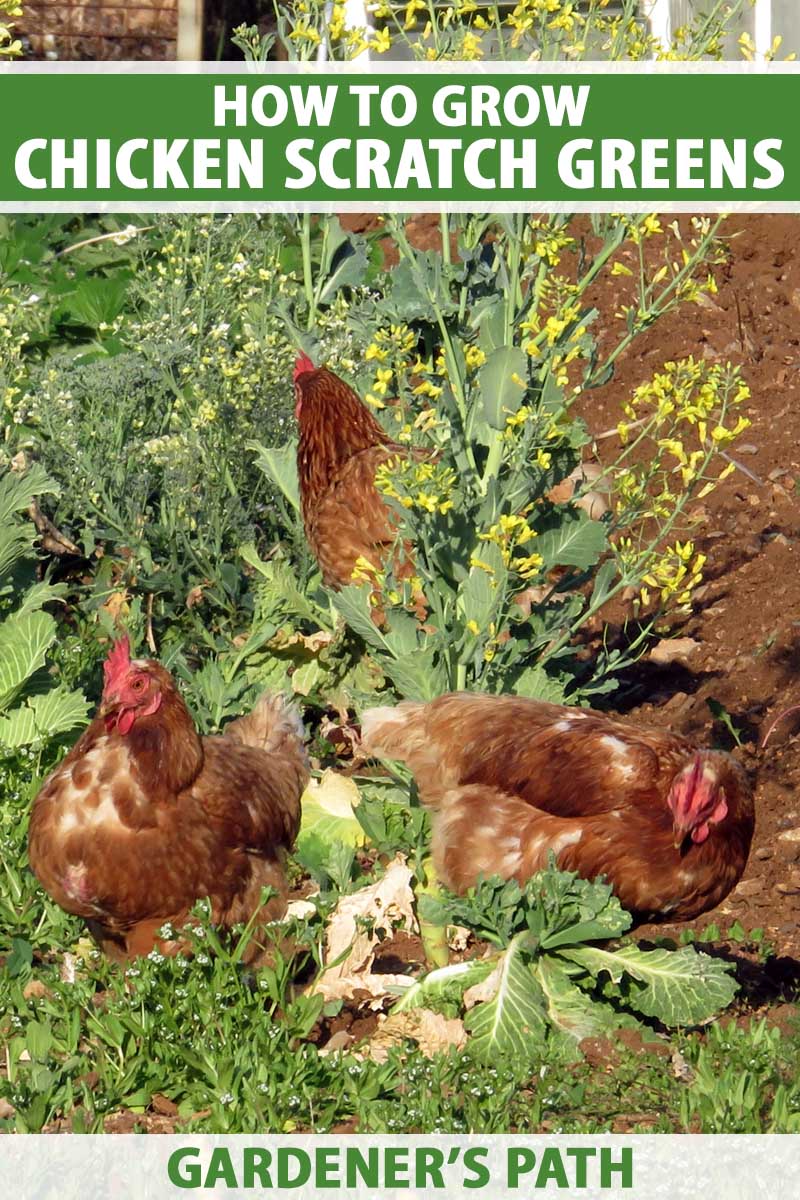
We link to vendors to help you find relevant products. If you buy from one of our links, we may earn a commission.
The grains you give them are important, but the greens and scratch materials they consume are just as critical.
In fact, many home gardeners have taken on the task of growing their own specialized vegetation to nourish their flock.
Why Chickens Scratch
Whether you free-range your animals or not, there is a lot of benefit to be had in allowing them to go out and forage. The nutrients that they get from working the ground are varied and essential.
But even if they cannot truly go wild in your yard or garden, allowing them time with a plot of living plant material has its perks.

When chickens eat from the ground, they often “scratch” at the earth, moving the soil and vegetation around to uncover new, hidden treats. Even if you are feeding them in a fairly sterile environment (with scratch grains on the pavement, for example), their instincts will prevail.
They will scratch and scratch – uncovering more soil, and eventually killing plants’ root systems.
Which Plants Make Good Greens?
Many people refer to the greens grown specifically for chickens as “fodder,” and you’ll hear this term used often among farmers.
Chickens have their taste preferences. Some of them are highly personal – for example, I am told that chickens love banana peels, but mine were never fans.
There are also some universal favorites that make excellent scratch pads for your birds.
Any of the following plants are good candidates for planting in your yard, chicken run, or in small flats (which we’ll discuss how to do a little later):
- Clover
- Kale
- Lettuce
- Mustard
- Spinach
- Sunflowers
- Swiss Chard
Since the chickens will be eating most of these plants before they have a chance to fully mature, it’s important that you plant them densely, and provide the seeds a good germination and growth foundation.
Chicken Runs and Garden Plots
Here is a simple primer to planting directly into the soil:
If you are planting in a chicken run, you’ll likely seed the entire area at once.
If you have access to a pasture or yard, measure off about one square foot of space per chicken. You can enclose each plot with chicken wire or other cheap fencing material.
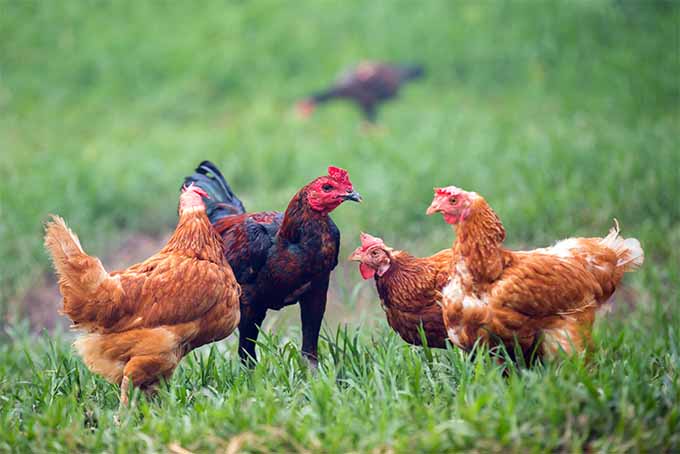
To prepare the dirt, till or remove all weeds and surface vegetation with a hoe. You can then cover the prepared area with a shallow layer of fresh compost.
Work the mulch into the soil, add a bit of extra moisture, and then add your seeds. You can then go back over the entire area with a layer of topsoil.
As the seeds will be sprinkled more thickly than if you were planting in your own vegetable garden, you don’t need to worry about sowing carefully spaced rows.
You can even use a coffee can with holes punched in the lid to shake seeds onto your plots.
Water the area daily until the seeds germinate, usually for between three and four days for the earliest varieties of the mix.
You will want the vegetation to reach about 5 inches in height before turning the chickens loose to enjoy it.
Depending on how many chickens you have, and how aggressive they are at scratching, your plot should last a week or more.
Growing in Trays
While runs and plots are convenient during the spring through fall, your birds will benefit from eating greens during the cold months, too.
For this reason, many chicken enthusiasts repeat the process outlined above, but put all of the soil and seed into clean plastic trays. Just be sure your trays have drainage holes.
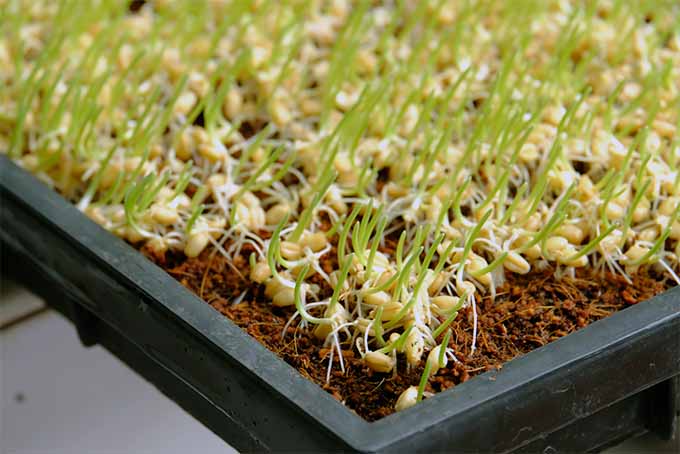
Starting trays of seeds requires space in a warm part of your home, near sunshine. You can place your thoroughly sanitized trays in a greenhouse shelving system or in an actual greenhouse – should you be lucky enough to own one.
Depending on how big your flock is and how much your birds enjoy their green treats, you might want to start a new tray every other day, or even every day, so that you always have a tray ready to be fed to the birds while other trays are developing for the days to come. This way, your lovely birds will never go a day without their treat.
Sprouts
Another way to provide fresh food for your flock is by sprouting.
Sprouting refers to growing grains for a shorter period of time, and many times gardeners use different seeds than they would for fodder.
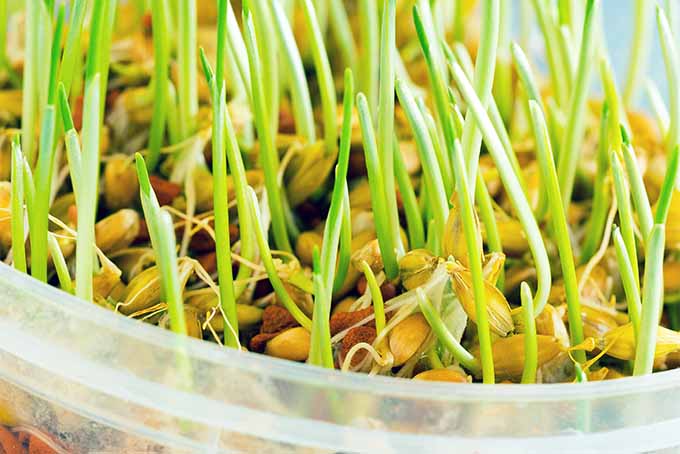
For example, you might try any of the types listed below, or a combination of these:
- Alfalfa
- Clover
- Barley
- Lentils
- Mung beans
- Soy beans
- Oats
- Wheat
You might like to try a winter wheatgrass seed like this one, available from True Leaf Market.
To start the sprouting process, soak the beans or grains for 8 hours (or overnight) in a bowl of water.
Put the soaked grains and beans in a shallow rectangular plastic container with holes punched in the bottom to allow water to go through without losing any of the beans or grains that you’re soaking.
Place this container inside another waterproof container, raised up a bit to allow the water to run out of the first container while remaining contained by the second container. Empty plastic pill bottles make good “stilts.”
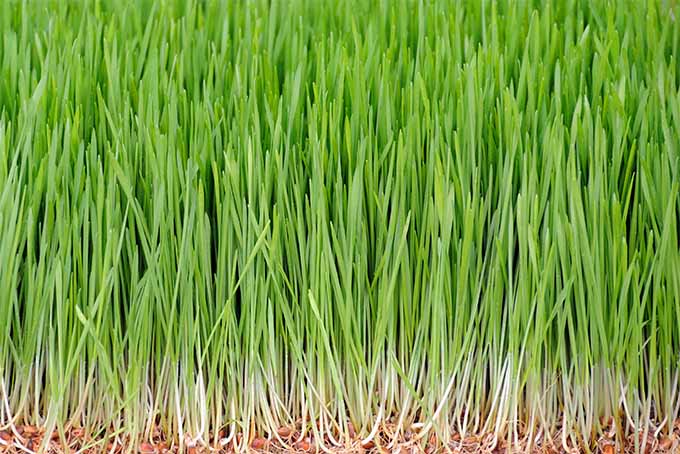
Thoroughly rinse and stir up the beans and grains two times a day, allowing the water to drip completely through to the enclosing container. The rinsing step is important to prevent mold from infiltrating your sprouts.
Sprouts should come on within days, and most experts say the sprouts offer prime nutritional benefit at four to six days’ growth. When it’s the size you want it to be, take the entire sprouted mass out for your birds to enjoy!
Learn more about sprouting for humans from the article on our sister site, Foodal.
Better Greens for Birds
The higher quality greens you give your flock, the better your eggs will be. Farm-fresh eggs are already head and shoulders above the competition in regard to flavor.
Giving your birds an extra boost of nutrition will translate to healthier eggs, as well, according to a study by S. Mattoli, et. al., published in the “Journal of Functional Foods,” which found that chickens fed alfalfa or flax sprouts produces eggs with increased levels of omega-3s, vitamin E, vitamin A, and other healthful substances.
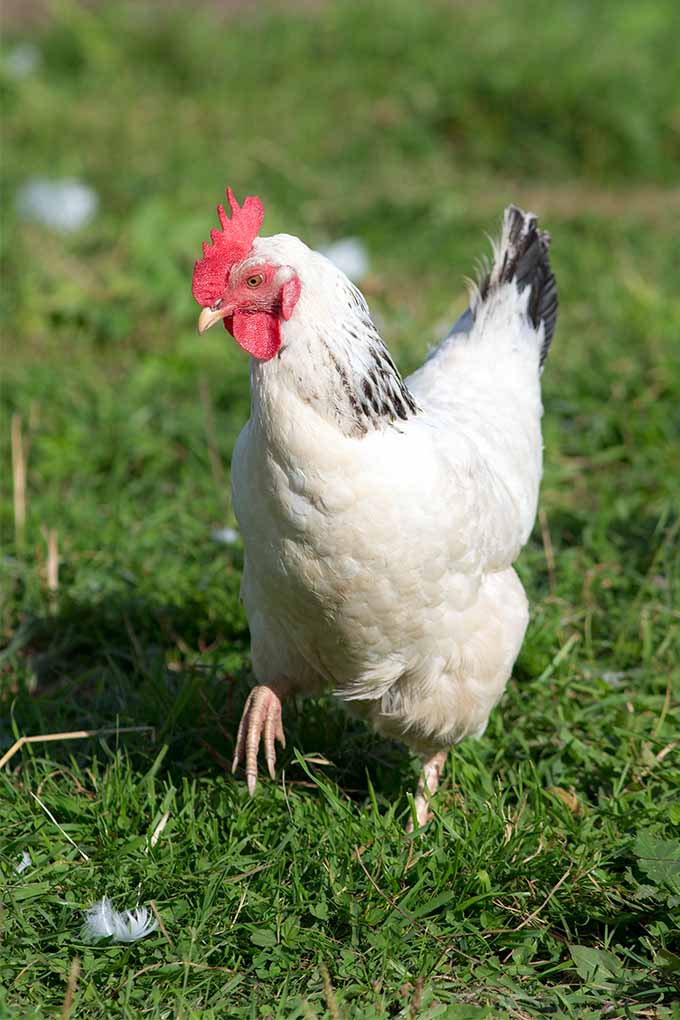
Greens are also a terrific way to keep chickens happy. Content birds are better behaved, suffer from fewer ailments, and are most likely to live in harmony without pecking or squabbling.
Do you have a leafy green that you think your feathered friends will adore? Try one or more of our methods and let us know in the comments section if your layers like their new treats.
With writing and editing by Gretchen Heber. Product photos via True Leaf Market. Uncredited photos: Shutterstock.
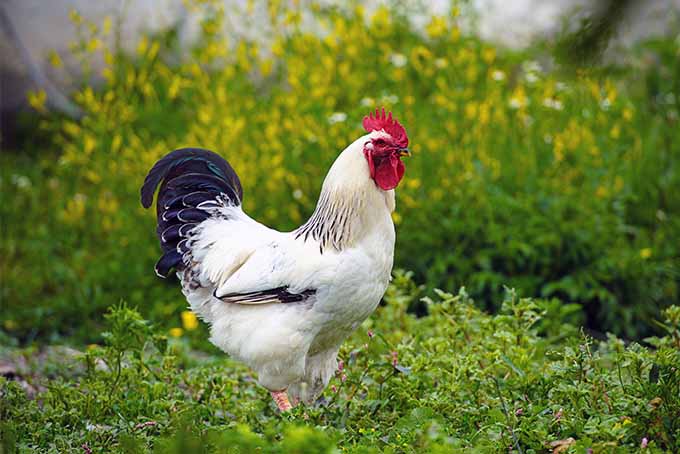
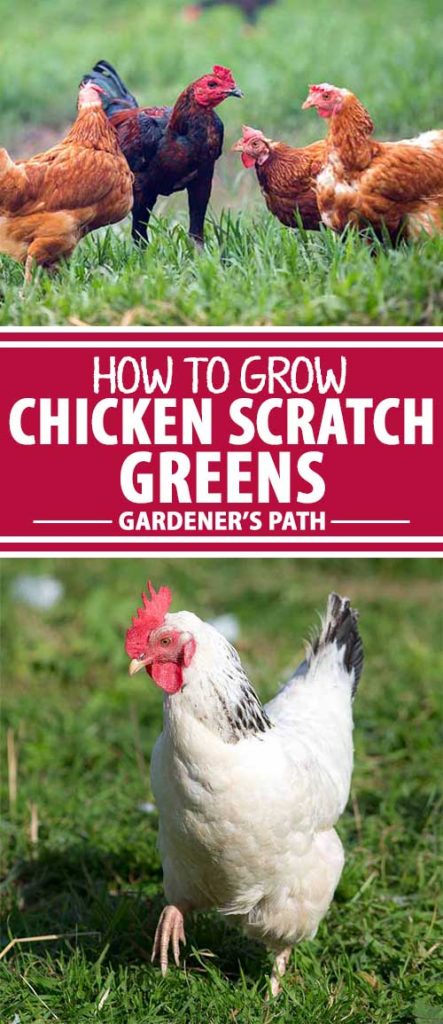
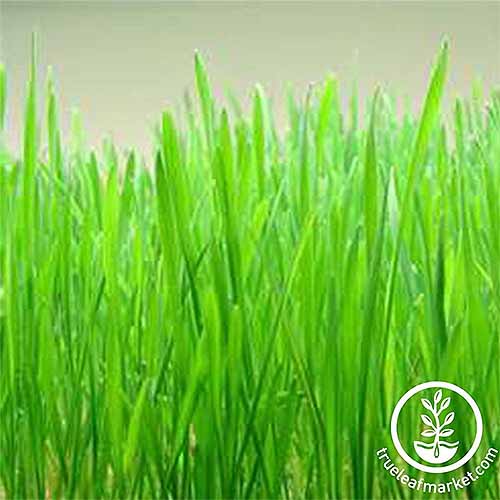
Thanks , now I can feed the birds confidently with green vegetables.
You’re welcome Patrick!
Hello. Wondering if you have a few more photos of the actual container within the container type of situation for sprouting grains. I am a very visual person and am not quite sure what I should use to do this inside, and then be able to take it outside to the hens? Do you just dump all the sprouted grains into a pan when ready? or simply take the pan with the sprouts and grain and set it down for them? Any help is appreciated. Thanks!
Has anyone tried frowning real chicken scratch? The kind you get from the bag at the feed store? Please advise!
Chicken scratch is a type of feed that consists of different types of seeds and grains that hens enjoy eating. For example, it may contain cracked corn, barley, wheat, oats, or sunflower seeds. Considered a treat, birds will “scratch” around in the dirt to pick up every last bit, hence the name.
If it contains cracked corn that will not grow of course. It depends upon the mix. You might ask your supplier.